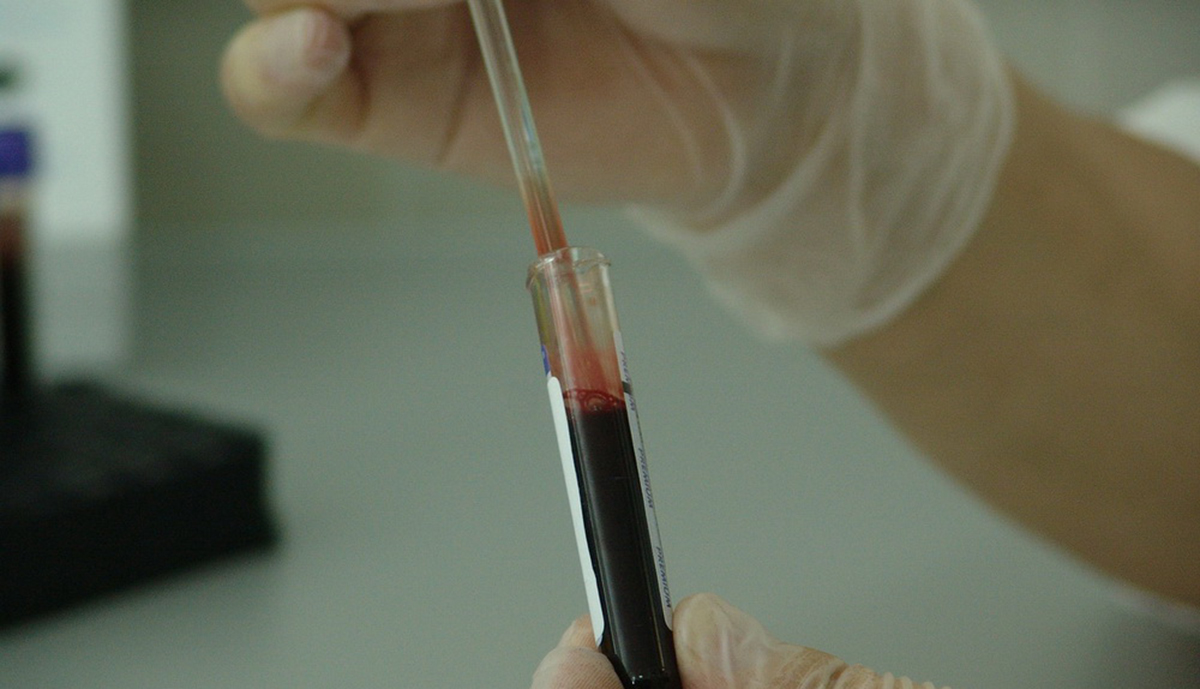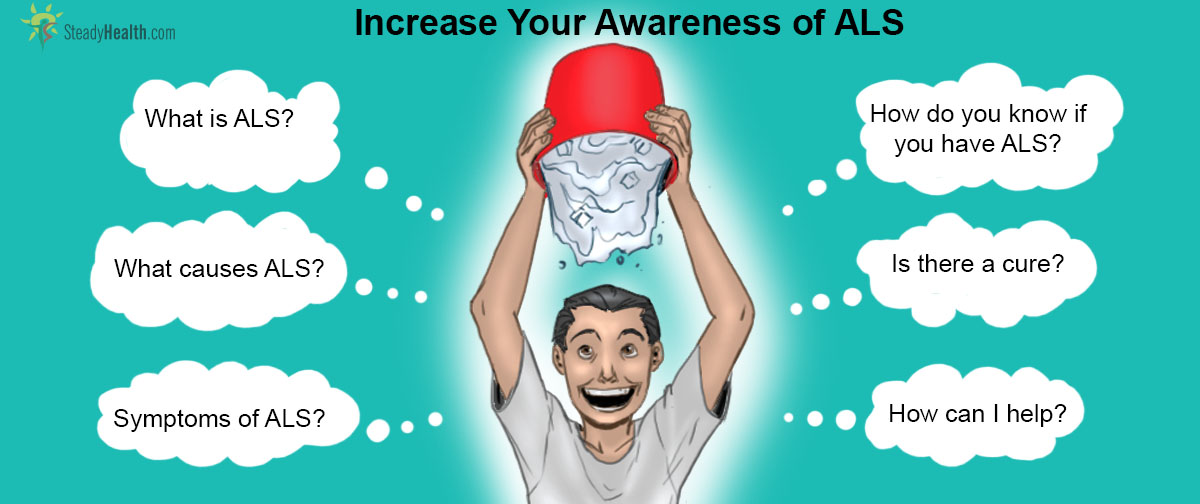ALS (Amyotrophic Lateral Sclerosis) is a rare disease, but it has now become a byword all over the world because of the ALS Ice Bucket Challenge that has been popularized by social media. Although its origin is obscure, the challenge was conceived to raise funds for research for the disease that affects around 30,000 Americans and still has no cure.
So much has been written and posted online about the Ice Bucket Challenge, which has involved not only ordinary netizens around the world, but even celebrities, royalty, and world leaders, who, together have raised more than $100 million (as of Aug 29,2014) for the cause. But one begins to wonder if awareness regarding ALS, the disease, has significantly increased beyond people's involvement in the fun challenge.
What is ALS?
Amyotrophic Lateral Sclerosis or Lou Gehrig's disease (after the famous baseball player who had the disease) is a rare, rapidly disablingcondition that affects the motor neurons of the brain and spinal cord.
That sounds very scary, especially that scientists have not found out exactly what causes it, how it can be prevented, and how one can be cured.
Fortunately, ALS affects only about one or two people for every 100,000 people in the population. At present, around 30,000 Americans have the disease, and about 5,000 new cases are diagnosed annually. Most patients are aged 40 to 60 years when diagnosed, but older or younger individuals may also be affected.
Possible Causes and Risk Factors
The exact cause has not been identified, but scientists have considered familial inheritance, which accounts only for about 10% of patients and genetic mutations. A chemical imbalance is also likely, since patients have been found to have unusually high levels of glutamate, a neurotransmitter (brain chemical), which can have toxic effects when it occurs in large amounts. Abnormal autoimmune responses (when the body attacks its own cells) have also been considered, as well as abnormal protein metabolism and accumulation in the nerve cells. Cigarette smoking and chronic exposure to lead have also been linked to the disease.
Signs and Symptoms of ALS
ALS usually starts with subtle and gradual changes in muscle function, affecting one limb at first, then rapidly progresses to involve other limbs and the rest of the body, with a loss of muscle control and death. These signs and symptoms include:
-
muscle twitching
-
cramping
-
muscle stiffness
-
unstable or awkward gait
-
loss of balance, stumbling
-
inability to use fingers for simple tasks such as writing or buttoning shirts
-
slurring of speech
-
difficulty chewing and swallowing, choking on food
-
exaggerated reflexes
-
difficulty holding the head up
-
difficulty maintaining posture
-
difficulty breathing
-
anxiety and depression
Problems with thinking, memory and decision making are uncommon, although personality changes may occur. Generally, patients do not experience loss of bowel or bladder control, tingling, pain, or loss of senses.
See Also: ALS: The Disease Behind The Ice Bucket Challenge
Patients usually die from complications such as pneumonia, lung failure, or heart failure.
Diagnosis And Treatment Of ALS
It is important to remember that ALS is very uncommon, and that your symptoms of muscle weakness or cramps may be due to other more common causes that are treatable. Just the same, to obtain proper diagnosis and treatment for your symptoms, consult a doctor.

Diagnosis of ALS
Signs and symptoms of widespread involvement of the muscles and nervous system functions may give a clue, but there is not a single test that can point to the diagnosis at once.
After the doctor evaluates the patient's medical history and physical examination, he may request for a laboratory work-up, which may include:
-
Blood tests
-
Urine tests
-
Spinal fluid analysis
-
Muscle biopsy
-
MRI or magnetic resonance imaging of the brain and spinal cord
These tests are non-specific, but they may help rule out other conditions that may be causing your symptoms. Other tests used to evaluate muscle and nerve functions include:
-
Electromyogram (EMG), to evaluate electrical activity of the muscles during contraction and at rest.
-
Nerve conduction studies, to look for nerve damage or muscle disease.
Your doctor may refer you to other specialists such as neurologists for further evaluation and management.
Treatment of ALS
Although a permanent cure for ALS has yet to be found, treatments may be given to help patients optimize their function and delay complications. These include:
-
Physical therapy and occupational therapy, which help patients use their available strength to function in daily activities. These treatments include the use of supportive devices to help patients ambulate, use the toilet, and do other basic functions around the house.
-
Speech therapy, which helps not only with talking, but with coughing and swallowing as well.
-
Medications to relieve symptoms such as muscle cramps, constipation, drooling, depression, etc.
-
Nutritional support is important, especially for those who have difficulty chewing and swallowing. A feeding tube may be needed in later stages.
-
Psychological, emotional and social support.
-
Breathing apparatus to support ventilation during the later stages
-
Riluzole (Rilutek), a medication which can help prolong survival for a few months. However, it is very expensive and has its own side effects.
See Also: Diagnosed with ALS: Frequently Asked Questions
ALS Research
The ALS Ice Bucket Challenge aims to support research that is being promoted by the ALS Association. Although some groups have posed various oppositions to the cause, which uses animals or embryonic stem cells for research, others have initiated their own fund-raising activities to support ALS research. At present, scientists are still looking into the possible causes and mechanisms that lead to the progression of the disease, tools to help diagnose the disease, as well as its possible treatment.
- Time. ALS Ice Bucket Challenge Donations Just Topped $100 Million.http://time.com/3222224/als-ice-bucket-challenge-donations-million/
- Slate.com. Take the “No Ice Bucket” Challenge.http://www.slate.com/blogs/future_tense/2014/08/12/icebucketchallenge_you_don_t_need_an_ice_bucket_to_donate_to_als_research.html?
- WebMD. Amyotrophic Lateral Sclerosis (ALS) - Topic Overview.http://www.webmd.com/brain/tc/amyotrophic-lateral-sclerosis-als-topic-overview
- Mayo Clinic. Amyotrophic Lateral Sclerosis.http://www.mayoclinic.org/diseases-conditions/amyotrophic-lateral-sclerosis/basics/definition/con-20024397
- MedicineNet. Amyotrophic Lateral Sclerosis (ALS or "Lou Gehrig's Disease"). http://www.medicinenet.com/amyotrophic_lateral_sclerosis/article.htm#amyotrophic_lateral_sclerosis_facts
- Mindmap by steadyhealth.com
- Photo courtesy of PublicDomainPictures by Pixabay : pixabay.com/p-20745/?no_redirect
- www.medicinenet.com
- www.mayoclinic.org
- www.mayoclinic.org
- www.slate.com
- time.com


